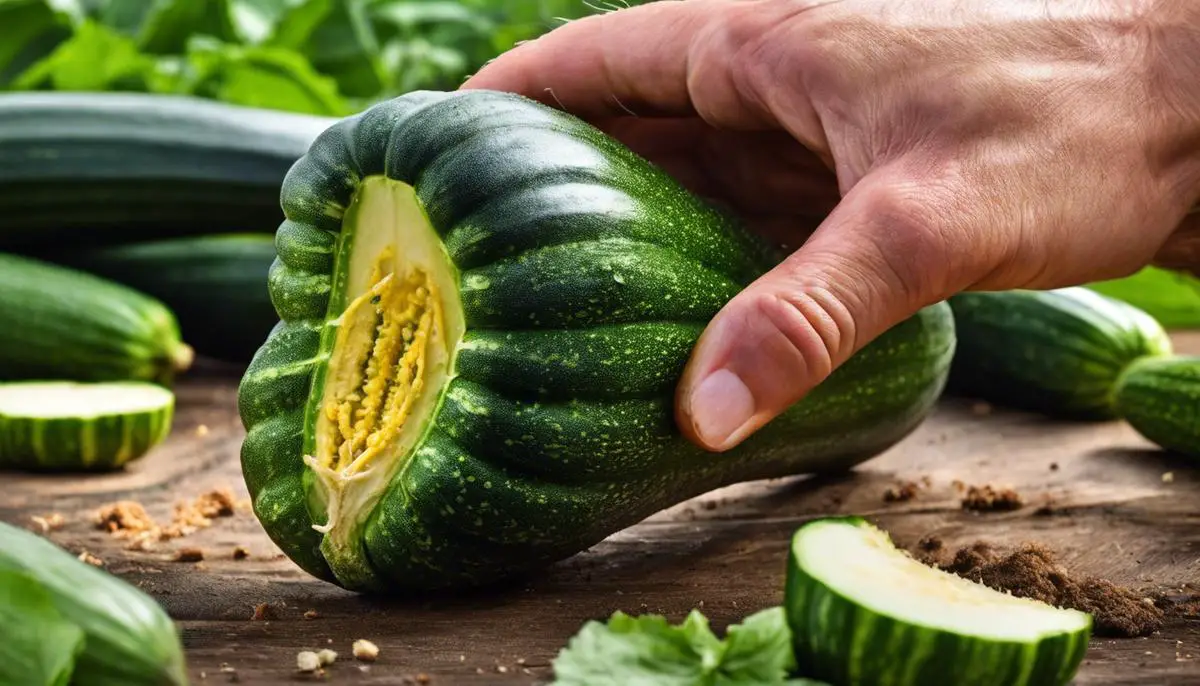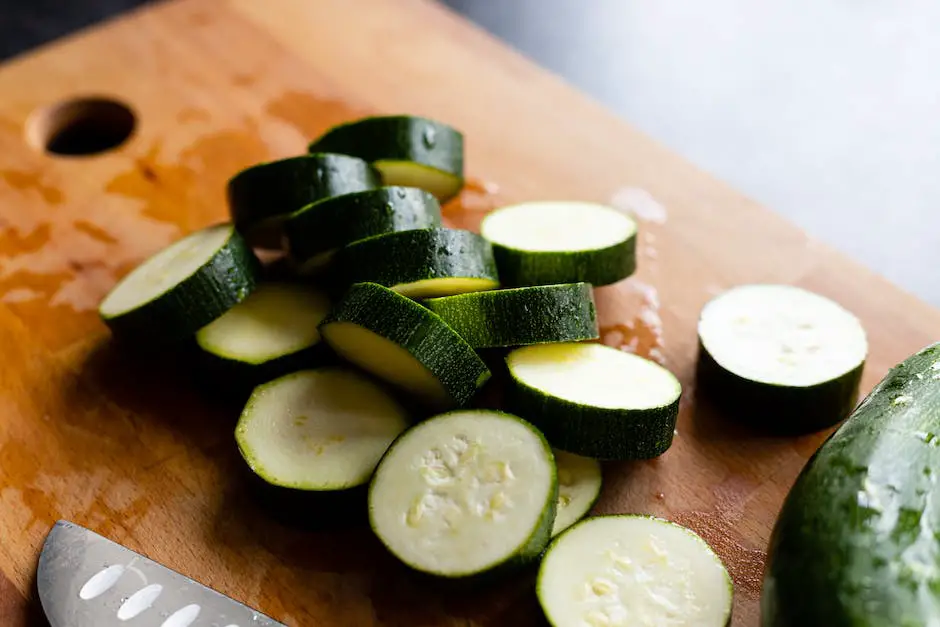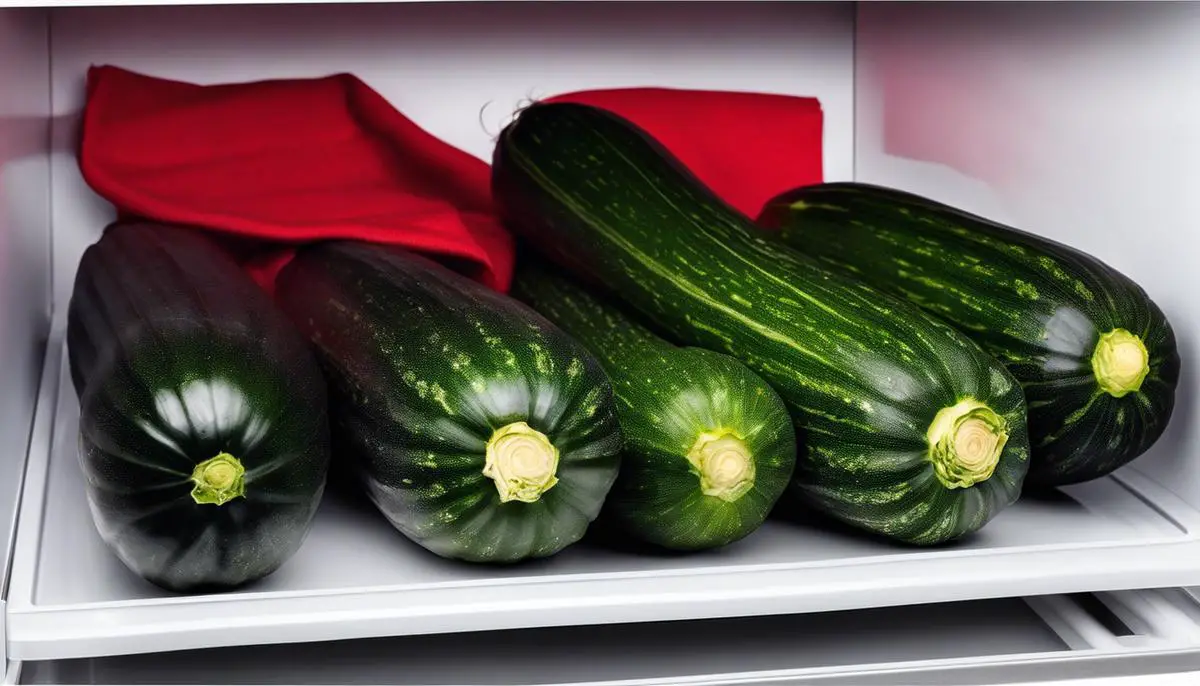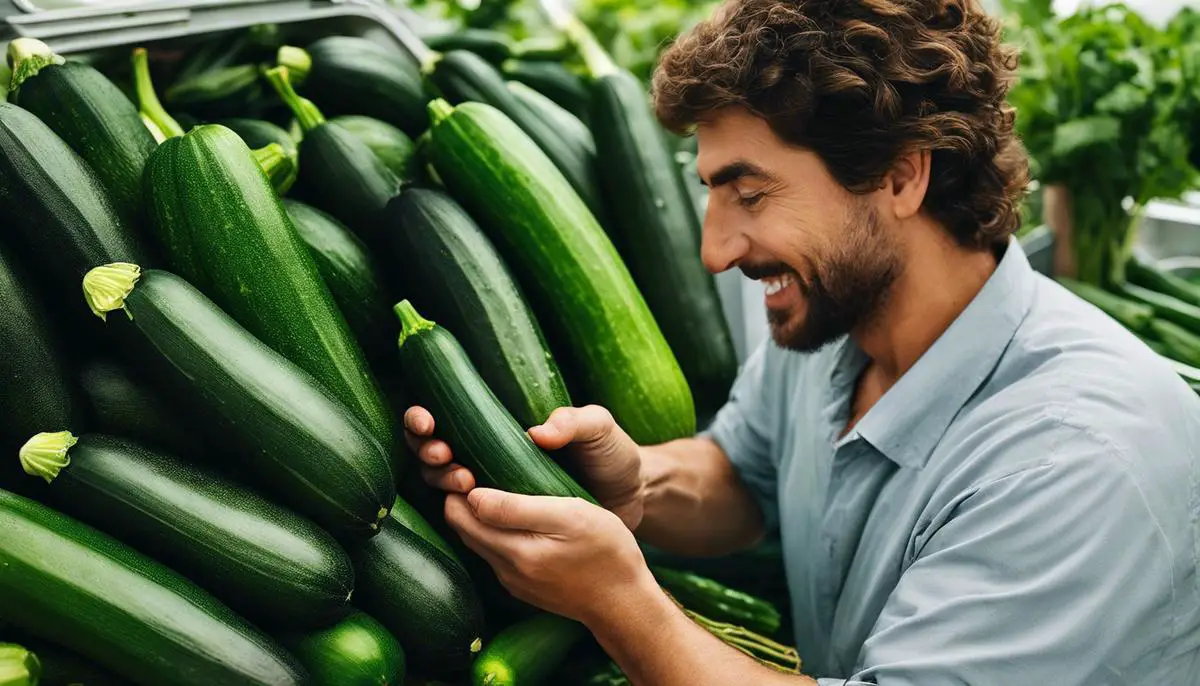Embarking on the journey of home gardening brings with it the rewarding task of harvesting your own produce. Among the many delights of the garden, zucchini stands out as a versatile and bountiful vegetable. To fully enjoy the fruits of your labor, it is crucial to grasp the subtleties of the harvesting process. The art of zucchini picking requires an eye for detail and an understanding of the delicate balance between ripeness and overgrowth. This guide will equip you with the knowledge to discern when your zucchinis are poised for picking, ensuring each squash from your garden reaches your table bursting with flavor, texture, and nutritional value. Embrace the nuances of homegrown zucchinis, and prepare to elevate your harvest from mere produce to culinary treasure.
Identifying Zucchini Maturity
Picking the Perfect Zucchini: Know When to Harvest!
Ah, zucchinis – the wonderfully versatile vegetable that can be both the star of a dish or the perfect subtle addition. But let’s face it, any zucchini enthusiast worth their salt knows that the secret to the most delectable dishes starts right there in the garden, with the perfect pick of the crop. Getting the timing right means the difference between a zucchini that’s the belle of the ball or one that’s, well, just okay. Let’s dig into the nitty-gritty of harvesting your home-grown zucchinis.
Reader Poll: What online courses would interest you?
Size Matters:
First things first, size does count in the world of zucchinis. Zucchinis are usually best picked when they’re small to medium-sized; that’s about 6 to 8 inches in length. At this size, the skin is still tender, the seeds are small, and the flavor is at its peak – sweet and slightly nutty. Overgrown giants may be impressive in size, but they often lose their oomph in the flavor department and tend to have an overly fibrous texture.
Check the Skin:
The perfect zucchini should have a glossy, firm skin that’s free of blemishes. Gently press the skin with your thumbnail; if you can puncture it easily, it’s ready to go. If the skin is too tough or feels like it has a hardened barrier, it’s probably overripe. Remember, zucchini matures at lightning speed, so it’s important to check your plants every day once they start to bear fruit.
Stem Check:
Another tell-tale sign is the stem. A ripe zucchini will have a stem that is starting to look slightly shriveled and is easy to puncture. If the stem still looks robust and green, give it a little more time. Meanwhile, an overripe zucchini will have a hard, woody stem – a definite sign that you’ve waited too long!
Subscribe to our newsletter!
Color and Luster:
Color is key. Ripe zucchinis have a uniformly deep green color, though depending on the variety, it could also be yellow or even striped. Dull, deep yellow signals that it’s past its prime. And a deep green with a dull finish – sorry to break it to you, but you should’ve plucked that stunner a few days ago.
How to Harvest:
The best way to pick your zucchini is with a sharp knife or a pair of shears. Gently hold the fruit and cut the stem about an inch away from the body. Tugging or twisting can damage the plant and open up the door for pests or diseases to march in. Plus, a clean cut looks much neater in your veggie basket.
In Short:
Small to medium size, glossy firm skin, slightly shriveled stem, and a deep consistent color are the signs of a zucchini that’s ready to shine in any dish. If daily inspections of your zucchini plants become a habit, you’ll be well on your way to becoming a connoisseur of the harvest. And there you have it – perfect zucchinis ready for your table! Happy harvesting!

Proper Harvesting Technique
Harvesting Zucchinis: Protect Your Plants for a Bountiful Season!
Harvesting zucchinis might seem like a simple task, but doing it without harming the plant is an art form of its own that requires some know-how. Preserving the integrity of the zucchini plant ensures a continuous yield of these versatile veggies through the growing season. So, let’s delve into the specifics of picking these delectable squashes the right way.
When it comes time to remove a zucchini from its plant, be gentle but purposeful. A sharp, clean pair of pruning shears or a knife is essential to avoid yanking or tearing, which can inflict serious stress on the plant’s stems and potentially introduce disease. When selecting your tool, make sure it’s sanitized to prevent any potential spread of pathogens. A simple wipe with rubbing alcohol can do the trick.
Position yourself to have a clear view and access to the zucchini’s base where it meets the stem. It’s crucial to avoid toppling the plant or snapping off neighboring fruit in your quest for the perfect pick. Grasp the fruit firmly but without squeezing, which can cause bruising.
Next, identify the area of the stem that’s roughly an inch above where the zucchini connects to the main plant. This will be your cutting location. Make a swift, clean cut through the stem at this point, ensuring the cut is straight to promote quicker healing for the plant. For plants with particularly thick stems, a slight sawing action might be necessary, but ensure the motion is steady to prevent jagged edges.
It’s important not to leave a lengthy stem on the zucchini itself, as this can lead to accidental punctures of other fruits during storage. However, completely removing the stem isn’t the way to go either, as a minuscule stub can help prevent the zucchini from rotting prematurely.
Once the zucchini has been severed from the plant, handle it with care. These robust looking vegetables can actually bruise and scratch quite easily, which can lead to faster decay. Also, a gentle placement into your harvesting basket or container is better than tossing it in.
After you’ve harvested your zucchinis, allow the plant some time to recover before checking back for more ripe fruit. Regular inspections and harvesting encourage the plant to produce more, so stay vigilant and keep picking to foster a fruitful harvest.
Zucchini plants are generous — with the right touch, they’ll keep your kitchen stocked with fresh produce. Remember to be swift, precise, and gentle in your harvesting habits, and you’ll be rewarded with a happy, healthy zucchini plant that’s ready to deliver all season long. So get out there, harvest with confidence, and enjoy the fruits of your labor, or in this case, the squashes!

Post-Harvest Handling and Storage
Once you’ve harvested your zucchinis with the utmost care, ensuring you have the perfectly ripe and luscious squashes in hand, the next crucial steps are handling and storage to extend their freshness.
Begin by brushing off any dirt or debris gently with a soft cloth or a brush; avoid washing the zucchinis immediately to prevent the introduction of moisture which can encourage spoilage. If you must wash them, do so just before using them in your cooking, not before storing.
After having your zucchinis clean and dry, it's time to store them. Zucchinis are best kept in a cool, slightly humid environment – think of the crisper drawer in your refrigerator. This special compartment offers just the right climate. If your refrigerator doesn't provide sufficient humidity, placing a cloth or paper towel in the drawer can help to maintain correct moisture levels.
For ideal results, store your zucchinis in perforated plastic bags; poking a few holes in a regular plastic bag will do the trick. This method prevents condensation from building up inside the bag which could make your zucchinis soggy and prone to rotting.
If you harvested a bountiful crop and refrigerator space is at a premium, consider storing zucchinis in a cool basement, cellar, or root storage bin. Here, they often maintain their freshness for a few days. Just remember that the warmer the storage temperature, the quicker you should use them to relish their peak flavor and texture.
For those zucchinis you plan to keep for longer than a week, blanching and freezing is an excellent option. Cut your harvest into slices or cubes, blanch for a brief moment in boiling water, followed by shocking them in ice water to halt the cooking process. Drain well, spread them out to dry, and then pack them into freezer bags or airtight containers. Frozen zucchinis are perfect for cooked applications since freezing changes their texture, making them softer once thawed.
What if you come across a zucchini that's been tucked away and lost some of its firmness? Don’t toss it just yet! These can still be great in soups, stews, and baked goods where their softer consistency won’t be an issue.
By giving zucchinis the care they need post-harvest, enjoying their fresh taste can extend well beyond the picking. Remember, the key is maintaining the right balance of cool and dry conditions, handling them as little as possible, and only introducing moisture when it's time to bring their freshness to the table. With these methods, not only is waste minimized, but the joy of a homegrown zucchini can be savored to the fullest.

As the sun sets on our gardening expedition, the lessons learned extend far beyond the harvest itself, influencing our appreciation and enjoyment of zucchini. Mastery of the correct harvesting time, technique, and post-harvest care encapsulates more than just good gardening practice—it’s a celebration of the bond between gardener and earth. With your newfound expertise, may each zucchini you grow and harvest bring not only sustenance but also the satisfaction of a job well done. Let the knowledge you’ve gained serve as a foundation for not only a bountiful harvest but also a deepened connection with the rhythm of nature in your own backyard.

